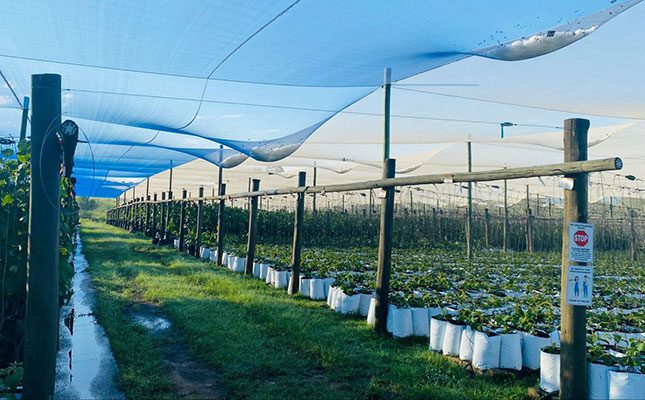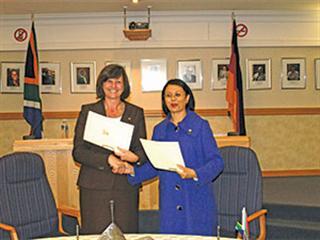
Photo: Lindi Botha
The average December rainfall for the province reached nearly 350mm, about 107mm more than the previous season’s rainfall and 136mm more than the 10-year average.
The South African Weather Service reported that severe thunderstorms with strong damaging winds, hail and heavy downpours led to the localised flooding of roads, settlements and bridges.
Malcolm Deacon, owner of Gold Tree Farms in White River, reported 253mm of rain over December. This is nearly double what was received the previous December, at 182mm.
His kiwi fruit crop, which is nearing harvest in February, escaped hail damage thanks to the hail netting erected over the vines and nursery.
While few farmers reported direct damage caused by the severe weather, crop protection spraying regimes were affected, which could result in crop losses down the road for citrus, macadamia and avocado farmers.
Werner van Niekerk, director of AgriStar Macadamias in the White River area of Mpumalanga, said the constant rain and lack of sunshine made for ideal conditions for fungi to develop in orchards, for example husk rot on macadamias.
The ample rain disrupted spraying schedules, which meant that AgriStar had to use helicopters to cover vast areas in time, rather than rely on the slower spray carts.
Although the litchi harvest was two weeks later than last year, fruit in the Nelspruit and Malelane areas could be picked in time before the ample rain.
Grain farmers in the Highveld region however received the short end of the rain stick. Ryk Pretorius, Grain SA’s representative for this region, said rain region had fallen erratically, with some farmers receiving enough, while others received very little.
“The Delmas, Balfour and Standerton regions had a difficult month, receiving less rain than usual over the time period. Rain over the last week of December made up for it, although there could be some crop damage as a result of the water stress during a key physiological period.”
Driving across the province provides a lush picture as fields are green with maize and soya beans. Pretorius believes that the grain season is on track for a good harvest this year.
Farmers are now eagerly awaiting more rain to see them through the last stretch of summer, with rumours of drier weather still looming as a result of El Nino.











